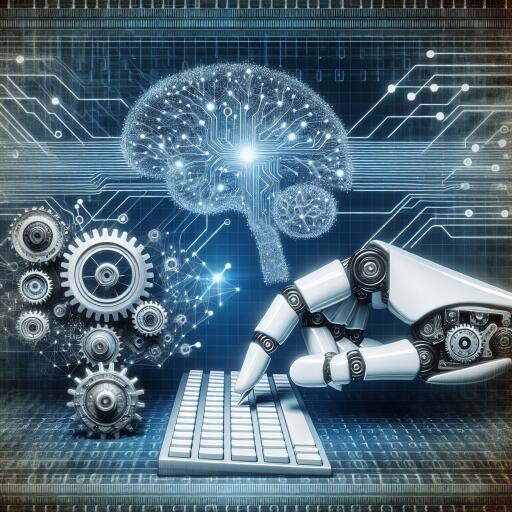AI Automation Essentials
In the realm of technological advancements, artificial intelligence (AI) automation stands out as a pivotal force driving businesses forward. It’s no longer just a futuristic concept but a practical tool that enables organizations to soar to new heights of efficiency and innovation. The core aim of this guide is to provide practitioners with a comprehensive understanding of how to strategically integrate and implement AI automation within their operations efficiently.
The onset of AI automation brings with it a myriad of benefits. From streamlining tedious processes to fostering environments ripe for innovation, its capabilities are vast and varied. However, diving into AI automation without a clear strategy can lead to complications and unmet expectations. Thus, a well-thought-out approach is crucial for those looking to harness the power of AI automation effectively.
The Strategic Importance of AI Automation
AI automation is not merely about replacing human efforts with robots or software; it’s about enhancing the capabilities of human teams, allowing them to focus on tasks that require human intelligence and emotional understanding. This strategic integration helps businesses achieve unprecedented levels of efficiency by automating repetitive tasks and analyzing data at a scale and speed impossible for humans.
Moreover, AI automation serves as a key driver for innovation. By automating routine tasks, it frees up human creativity, allowing teams to explore new ideas and solutions. This not only accelerates the pace of innovation but also helps in identifying and capitalizing on new opportunities, giving enterprises a significant competitive edge in the market.
Building and Implementing AI Automation
The journey to successfully integrate AI automation into business operations involves several critical steps. First and foremost, it requires a clear understanding of the organization’s specific needs and the objectives that AI automation is expected to achieve. This initial stage is crucial for setting the direction and scope of the AI automation project.
Once the goals are defined, the next step is to identify the processes that are best suited for automation. Not all tasks are viable candidates for AI automation; thus, selecting the right processes is key to maximizing efficiency and effectiveness. This involves an analysis of the current workflow to pinpoint repetitive, time-consuming tasks that can be automated, freeing up human resources for more strategic activities.
Designing the AI Automation Solution
Designing the AI automation solution is perhaps the most technical phase. It entails choosing the right technology stack, including AI models and automation tools that align with the identified goals. Collaboration between AI experts, data scientists, and the organization’s IT team is essential to ensure the selected solution is both feasible and scalable.
Moreover, a successful implementation strategy should also incorporate a testing phase. Rigorous testing helps in identifying any issues or gaps in the automation process, allowing for adjustments before full-scale deployment. This step is critical in ensuring the reliability and effectiveness of the AI automation solution.
Data: The Backbone of AI Automation
At the heart of any AI automation is data. The quality and quantity of data available directly impact the effectiveness of the automation solution. Thus, organizations must invest in robust data collection and management practices. Clean, relevant, and comprehensive data sets enable AI models to learn effectively, leading to more accurate and efficient automation.
Beyond the technical aspects, successful AI automation also requires a change in mindset. Teams need to be trained and prepared for the integration of AI into their workflows. This involves not only technical training but also fostering an understanding of the benefits and challenges of AI automation. Emphasizing the importance of human-AI collaboration is essential for overcoming resistance and ensuring a smooth transition.
Overcoming Challenges and Looking Ahead
While the benefits of AI automation are clear, organizations may face several challenges along the way. These can range from technical hurdles, such as data quality issues, to organizational resistance to change. Overcoming these challenges requires strong leadership, clear communication, and an agile approach to problem-solving. Leaders must champion the cause, fostering an environment of innovation and adaptive learning.
Looking ahead, the evolution of AI and automation technologies holds promising prospects for businesses willing to adapt and innovate. Staying updated with technological advancements and continuously optimizing automation strategies will be key to maintaining a competitive edge. The journey of integrating AI automation is ongoing, with each step unlocking new opportunities for growth and innovation.
In conclusion, the strategic integration of AI automation into business practices offers a path to enhanced efficiency, innovation, and competitive advantage. By understanding the essentials of building and implementing AI automation, practitioners can navigate this complex process with greater confidence and success. The future is bright for those who embrace the transformative potential of AI automation.









